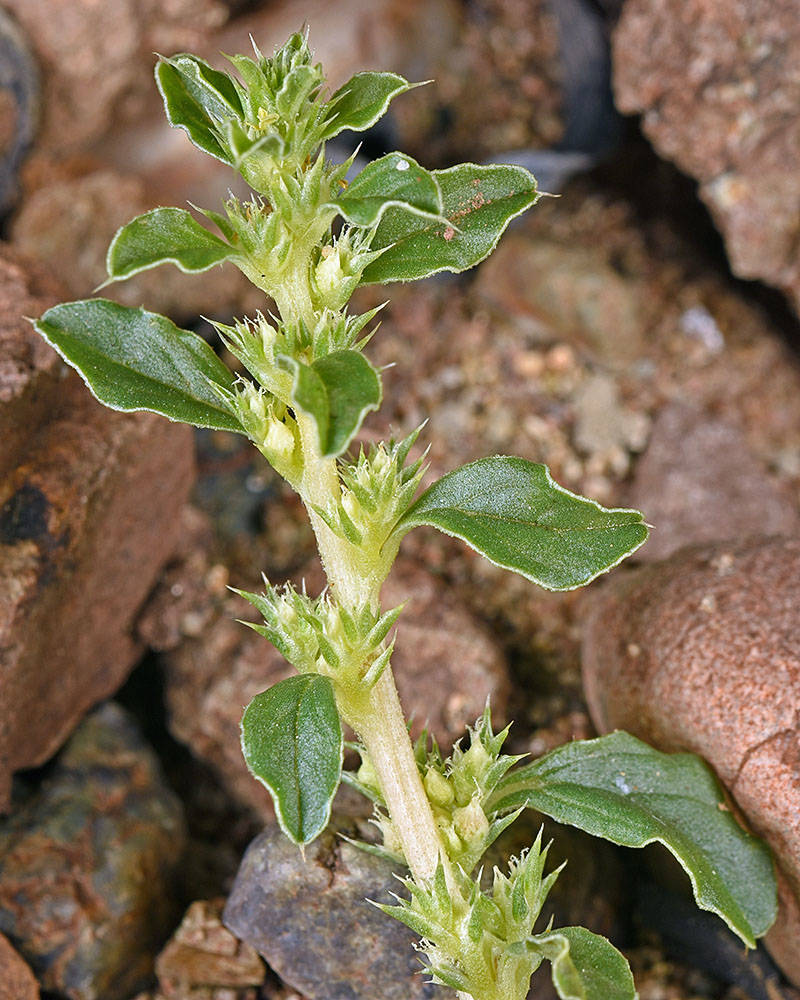Amaranthus muricatus
Amaranthus californicus
California amaranth
prostrate; much branched and mat-forming, 1–5 dm, often whitish.
blades oblong, obovate, or oblanceolate, 3–20 mm, bases wedge-shaped;
margins entire; plane; flat to sometimes undulate;
midveins extending to a spine;
tips rounded to subacute;
petioles 2–6(8)mm; ? ½ as long as blade.
axillary clusters of flowers, staminate and pistillate flowers intermixed;
bracts small and inconspicuous, 1–2 mm.
perianth segments (2)3; equal to subequal, 1–1.5 mm;
stamens 3.
perianth segments 1–3, unequal, only 1 well developed, 1–1.2 mm;
styles 3; erect.
subglobose, 1–1.2 mm; smooth, wrinkled near tips; dehiscence irregular to circumscissile.
lenticular, obovate, 0.7–1 mm, dark red-brown; shiny.
Amaranthus muricatus
Amaranthus californicus
Mud flats, dry ponds, ditches, gravel bars, disturbed areas. Flowering Jun–Sep. 50–1500 m. BR, BW, Owy, Sisk. CA, ID, NV, WA; scattered in western North America. Native.
Bridget Chipman
- Local floras:
CA,
OR,
WA
- Local Web sites:
CalFlora,
CalPhotos,
Flora NW,
PNW Herbaria
WildflowerSearch
iNaturalist (observations)
USDA Plants Database
- LBJ Wildflower Center
- SEINet
- Plants of the World Online
- Encyclopedia of Life
- Wikipedia
- Google Image Search



